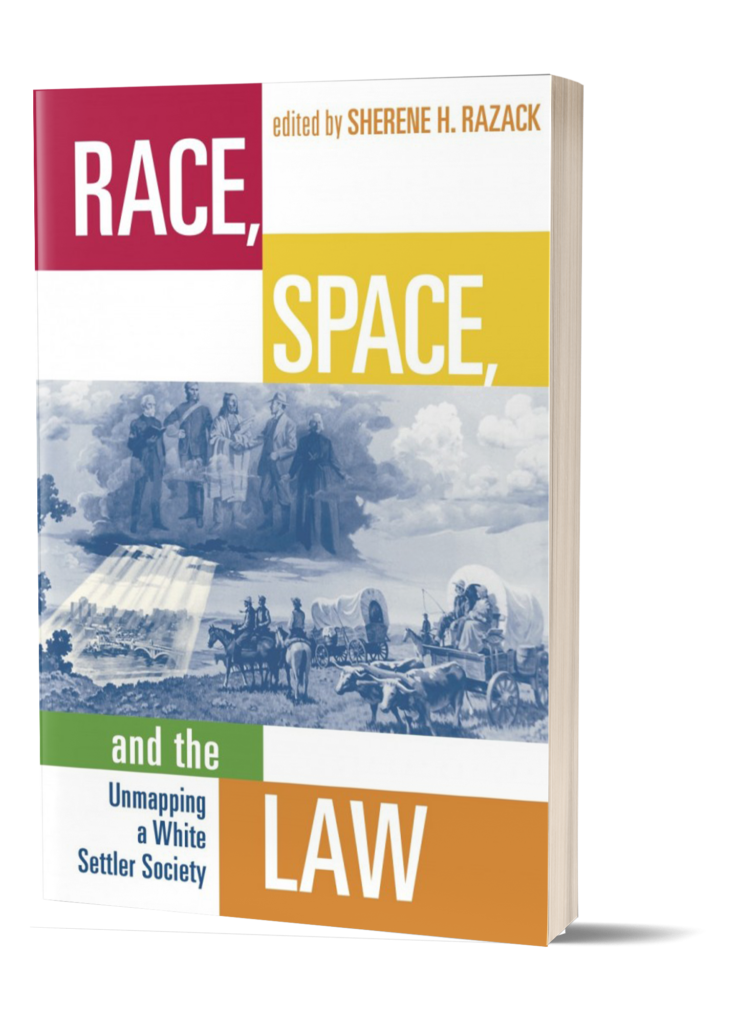- Home
- Publications
Race, Space, and the Law: Unmapping a White Settler Society
Published April 2002
Race, Space, and the Law: Unmapping a White Settler Society
Race, Space, and the Law belongs to a growing field of exploration that spans critical geography, sociology, law, education, and critical race and feminist studies. Writers who share this terrain reject the idea that spaces, and the arrangement of bodies in them, emerge naturally over time. Instead, they look at how spaces are created and the role of law in shaping and supporting them. They expose hierarchies that emerge from, and in turn produce, oppressive spatial categories.
The authors’ unmapping takes us through drinking establishments, parks, slums, classrooms, urban spaces of prostitution, parliaments, the main streets of cities, mosques, and the U.S.-Canada and U.S.-Mexico borders. Each example demonstrates that “place,” as a Manitoba Court of Appeal judge concluded after analyzing a section of the Indian Act, “becomes race.”

Praise
“An insightful and provocative intervention.”
David Theo Goldberg, Director, University of California Humanities Research Institute
“[The book’s] strengths lie in the new approach to quantifying and researching issues and situations that were previously disregarded as not susceptible to academic analysis and its advancement of scholarship in the area of race relations in Canada.”
Tracey Lindberg, Athabasca University